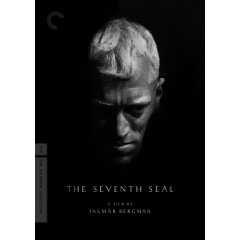 Formed: 1964 (New York, NY)
Formed: 1964 (New York, NY)Disbanded: 1973
Instruments: Lou Reed (Vocals, Guitar), John Cale (Bass, Viola & Organ), Sterling Morrison (Guitars) & Maureen Tucker (Percussion & Drums)
Genre: Experimental Rock, Proto-Punk, Rock & Roll
The most influential rock & roll band of the last 40 years? This one--no contest. However, the Velvet Underground wasn't really "ahead of its time." These records offer a clarifying, bracing vision; Lou Reed trained his acute songwriter's eye on the world around him. specifically, the streets and demimonde of New York City.
THE VELVET UNDERGROUND & NICO/1967/Verve****
WHITE LIGHT/WHITE HEAT/1967/Verve***
THE VELVET UNDERGROUND/1969/Verve****
LOADED/1970/WB****
LIVE AT MAX'S KANSAS CITY/1972/Atlantic**
1969 LIVE/1974/Mercury***
VU/1985/Verve****
ANOTHER VIEW/1986/Verve**
THE BEST OF THE VELVET UNDERGROUND/1989/Verve****
PEEL SLOWLY AND SEE/1995/Polydor****
While San Francisco groups benignly celebrated the Summer of Love, The Velvet Underground & Nico documented the side effects of drug experimentation and sexual freedom on chilling tracks like Heroin and Waiting For My Man. A former student of the avant-garde classical music, bassist John Cale tempers the Velvet's dense guitar onslaught with stark, jarring viola cries. Reed and Sterling Morrison's had been playing guitar together since the early '60s; they took the steady, rhythmic strumming of folk and gradually distorted it into a crude, propulsive electric blur. But Reed also displays a finely honed pop sense on the achingly insightful love songs Femme Fatale and I'll Be Your Mirror. Nico's artfully murmured vocals on these two tracks are a matter of taste; certainly, her efforts pale in comparison to Reed's deadpan mastery of talk-singing.
By the second album, Nico was gone and the Velvet Underground's association with Andy Warhol was winding down. White Light/White Heat taps into the group's brilliamt, blinding musical essence: the 17-minute Sister Ray--minimalist tour de force--hurtles along like an amphetamine rush, bypassing the usual psychedelic detours in a headlong charge. Yet in the end, underneath the guitar mesh and trance-inducing organ, Maureen Tucker's nervous-but-steady drum pulse just may be what renders Sister Ray so hypnotic. Just as confidently, The Velvet Underground bolts off in the opposite direction. With Cale departed for a solo career, Reed really starts to deepen his songwriting. Pale Blue Eyes and Beginning To See The Light reveal the compassion and insight behind his skeptical, world-weary stance, while What Goes On indicates the Velvets can still push your stereo's readout dials well into the red zone.
Reed reaches his songwriting zenith on Loaded, and the band's wall-of-raunch crystalyzes into instantly recognizable sonmg structures. Sweet Jane and Rock & Roll deserve their status as anthems; those invigorating three-chord heartbeat riffs underscore the stirring, evocative details in the lyrics. Singing about suburban Jenny, whose lyrics "life was saved by rock & roll," Reed struck a resonant chord with a new, disaffected generation of rock & rollers. Never was it a best-seller.

No comments:
Post a Comment